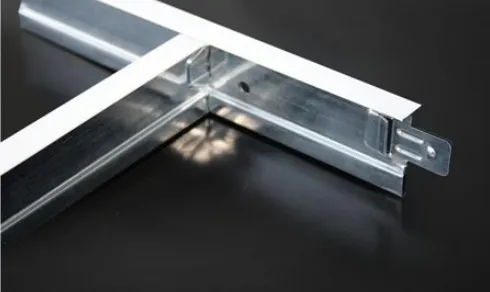- Afrikaans
- Albanian
- Amharic
- Arabic
- Armenian
- Azerbaijani
- Basque
- Belarusian
- Bengali
- Bosnian
- Bulgarian
- Catalan
- Cebuano
- Corsican
- Croatian
- Czech
- Danish
- Dutch
- English
- Esperanto
- Estonian
- French
- German
- Greek
- Hindi
- Indonesian
- irish
- Italian
- Japanese
- Korean
- Lao
- Malay
- Myanmar
- Norwegian
- Norwegian
- Polish
- Portuguese
- Romanian
- Russian
- Serbian
- Spanish
- Swedish
- Thai
- Turkish
- Ukrainian
- Uzbek
- Vietnamese
dets. . 07, 2024 11:47 Back to list
what are mineral fiber ceiling tiles made of
What Are Mineral Fiber Ceiling Tiles Made Of?
Mineral fiber ceiling tiles have become a popular choice in both commercial and residential settings. These tiles are not only aesthetically pleasing but also offer excellent sound absorption, fire resistance, and insulation properties. So, what exactly are these tiles made of, and what makes them so advantageous?
Composition of Mineral Fiber Ceiling Tiles
Mineral fiber ceiling tiles are primarily composed of natural or synthetic fibers derived from various minerals. The main materials used include
1. Fiberglass This is one of the core components in many mineral fiber ceiling tiles. Fiberglass is made from very fine glass fibers and is known for its lightweight properties and excellent thermal insulation capabilities. It is resistant to moisture and is not conducive to mold growth, making it ideal for environments where humidity is a concern.
2. Mineral Wool (Rock Wool) Often used in conjunction with fiberglass, mineral wool is made from natural rock or basalt that is melted and spun into fibers. This material is fire-resistant and provides outstanding acoustical properties, which helps in reducing noise levels in rooms. It is also effective at preventing heat loss, thus contributing to energy efficiency.
3. Recycled Paper Products Some mineral fiber ceiling tiles incorporate recycled paper as a binding agent. This not only bolsters sustainability efforts but also helps in achieving a suitable texture and appearance for the tiles.
4. Other Additives Various additives are often included to enhance specific characteristics of the tiles. These may include fire retardants, fungicides, and additional sound-absorbing materials. Each additive serves a distinct purpose, contributing to the overall performance of the ceiling tiles.
Manufacturing Process
The production of mineral fiber ceiling tiles generally involves several key steps
1. Raw Material Preparation The raw materials, including fiberglass, mineral wool, and other components, are prepared and processed. Fiberglass is melted down and extruded into fine strands.
2. Mixing The prepared materials are mixed in precise proportions along with water and any additives. This creates a slurry that can be molded into the desired shape.
3. Molding and Forming The slurry is poured into molds that define the size and shape of the ceiling tiles. During this stage, the mixture is compacted to ensure uniformity.
what are mineral fiber ceiling tiles made of

4. Drying and Curing After molding, the tiles are subjected to a drying process, removing excess moisture. This step is crucial for attaining the desired structural integrity. Following drying, the tiles may be cured in an oven to enhance their durability.
5. Finishing Once cured, the tiles undergo finishing processes. This may include cutting to size, surface texturing, and adding any finishes or coatings to enhance aesthetic appeal and performance.
Advantages of Mineral Fiber Ceiling Tiles
The composition and manufacturing process of mineral fiber ceiling tiles result in several benefits
- Acoustic Performance The fibrous nature of the materials allows them to effectively absorb sound waves, making them ideal for spaces such as offices, restaurants, and schools, where acoustics play an important role.
- Fire Resistance Mineral wool and fiberglass are inherently fire-resistant materials, contributing to building safety regulations and giving occupants peace of mind.
- Thermal Insulation The insulating properties of these tiles help maintain indoor temperatures, which can lead to energy savings.
- Lightweight and Easy to Install Despite their durability, mineral fiber ceiling tiles are relatively lightweight, making them easy to handle and install.
- Aesthetic Versatility Available in a wide range of styles, colors, and textures, these tiles can complement various interior designs, from modern to traditional.
- Sustainability Many manufacturers focus on using recycled materials in their tiles, aligning with green building practices and environmental sustainability initiatives.
Conclusion
In summary, mineral fiber ceiling tiles are versatile, effective, and aesthetically pleasing solutions for a variety of environments. Their primary composition—fiberglass, mineral wool, recycled materials, and various additives—ensures they deliver high performance in terms of acoustics, fire resistance, and insulation. As sustainability becomes increasingly important in construction, the eco-friendly options available in mineral fiber tiles make them an excellent choice for both new builds and renovations. Whether you are looking to improve the acoustics of a busy office or simply want to update the look of your home, mineral fiber ceiling tiles present a compelling option.
-
Transform Interiors with PVC Gypsum Ceiling: A Stylish, Durable, and Moisture-Resistant SolutionNewsMay.19,2025
-
The Smart Interior Upgrade: Discover the Durability and Versatility of Gypsum Ceiling Access Panel SolutionsNewsMay.19,2025
-
The Smart Choice for Interior Design: Discover the Value of PVC Gypsum Ceiling SolutionsNewsMay.19,2025
-
Mineral Fiber Ceiling Tiles: The Smart Blend of Performance and AestheticsNewsMay.19,2025
-
Mineral Fiber Ceiling Tiles: The Superior Choice Over Gypsum for Sound and Fire SafetyNewsMay.19,2025
-
Mineral Fiber Ceiling Tiles: Eco-Friendly Strength and Style for Every CeilingNewsMay.19,2025







